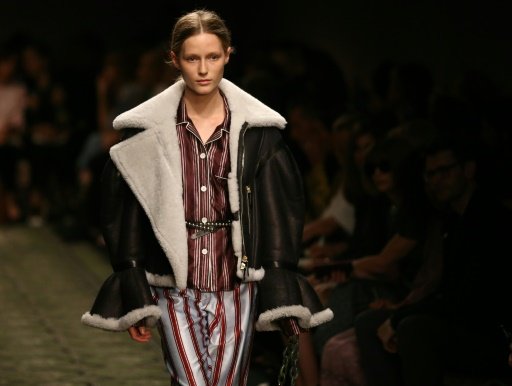
Burberry will join a raft of top brands Monday in selling clothes straight from the catwalk, but the “see now, buy now” trend transforming fashion presents a challenge to smaller designers.
For an industry driven by a desire for the new, the months-long delay between seeing a new collection and having it in your hands was always frustrating.
But this is increasingly becoming a thing of the past.
British luxury brand Burberry will put on sale its entire September collection as soon as it is previewed on the London catwalk on Monday, days after Tom Ford and Tommy Hilfiger made similar moves with their New York shows.
“Consumers do not shop twice a year and from season to season. They do not want to wait several months to buy the designs they see and are excited by on the runway,” said a Burberry spokeswoman.
The move means ditching the long-established tradition of showing one season ahead, a radical change that has an impact right down the supply chain.
It has pitted the more business-centric fashion weeks in London and New York against Milan and Paris, where top end luxury labels such as Dior and Chanel argue that instant gratification will disrupt the creative process.
Burberry creative director and chief executive Christopher Bailey said the shift is a natural development from the democratisation of fashion shows.
Burberry was among the first labels to broadcast its catwalk show live, and most of the main London Fashion Week schedule is now available for anyone to watch online.
“From livestreams to ordering straight from the runway to live social media campaigns, this is the latest step in a creative process that will continue to evolve,” Bailey said.
– ‘Buy that red dress’ –
High street giant Topshop has also embraced the model, selling 60 percent of its new UNIQUE collection immediately after Sunday’s London show, in what creative director Kate Phelan said was a response to a new kind of customer.
“They’re looking at blogs, Instagram and fashion in a different way,” Phelan told Vogue.co.uk.
“If they see a girl wearing a red dress, they want to go out and buy that red dress and they don’t understand that it’s a season, just that it’s a red dress.”
The collection, which was inspired by London’s fashion markets in the 1980s, was available to buy online, in some stores and at a “pop-up” market stall at the catwalk venue of Spitalfields Market.
– ‘Changing our business model’ –
Fashion mogul Francois-Henri Pinault, whose Kering group owns Gucci, Saint Laurent, Alexander McQueen and Balenciaga, has previously said the new model went against the “dream and desire” that drives the industry.
In practical terms, it is particularly hard pull off for smaller brands. They do not have their own shops and use fashion week as a showcase for buyers, who place orders that the designers fill over the coming months.
Temperley London is known for its modern take on bohemian style using artisan techniques with hand-worked details, and its clothes that are not easy to manufacture.
This season it sold three items from its new collection straight after the show via social media platform Vero, but designer Alice Temperley said any more would be a struggle.
“We couldn’t do the whole collection without changing our entire business model,” she told AFP.
With consumers becoming ever more demanding, such brands may have no choice but to speed up the process, however.
“Giving consumers what they want is not a new development in fashion -? what is new is the required speed,” said Magdalena Kondej, head of apparel at Euromonitor International.
“Consumers now live in a very fluid present, and that is where the brands need to be.
“Fast fashion has an obvious advantage in terms of already efficient supply chains but it is luxury brands that will have to adjust on a bigger scale and shorten the period between runway buzz and retail availability.”
